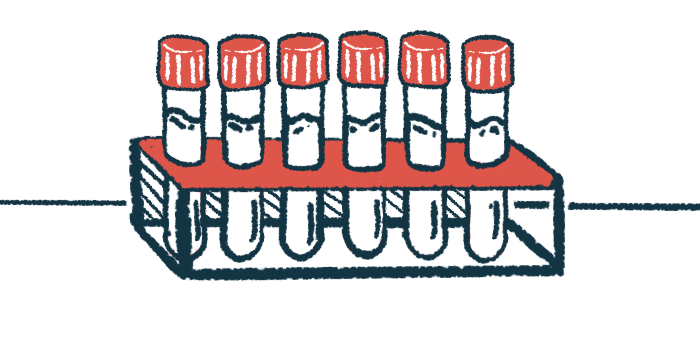Cilnidipine, bexarotene ease liver damage in rat model of cholestasis
Combo treatment also reduced oxidative stress, a type of cellular damage

Preventive treatment with cilnidipine and bexarotene significantly reduced markers of inflammation, liver damage, and oxidative stress, a type of cellular damage, in a rat model of chemical induced-cholestasis, a study showed.
The combo treatment’s ability to prevent or lessen the damaging processes associated with the development of cholestasis was thought to be related to activation of the farnesoid X receptor (FXR) protein, a key regulator of bile acid balance. Bile acids are the main component of bile, the digestive fluid that builds up in the liver of people diagnosed with cholestasis.
“These findings highlight the potential of cilnidipine and bexarotene as a novel therapeutic approach for the management of cholestatic liver disorders,” researchers wrote.
The study, “Synergistic action of cilnidipine and bexarotene in mitigating cholestatic liver damage: role of FXR signaling cascade,” was published in Naunyn-Schmiedeberg’s Archives of Pharmacology.
Cholestasis induced in rats by administering ANIT
Cholestasis refers to slowed or halted flow of bile out of the liver and into the intestines. Impaired bile flow can result in toxic bile accumulation in the liver, leading to severe liver damage and bile leakage into the bloodstream, which can cause a number of symptoms.
Ursodeoxycholic acid, a nontoxic bile acid sold under the brand names Urso and Actigall that helps bile flow through the liver, is typically the treatment for cholestasis. However, it “has limited success in treating certain kinds of cholestasis, so the discovery of new therapeutic medicines is urgently needed,” the researchers wrote.
For this study, a pair of researchers in Iraq analyzed the combined action of cilnidipine and bexarotene in mitigating liver damage in a rat model of cholestasis. Cilnidipine, a blocker of calcium channel proteins, and bexarotene, a retinoid X receptor (RXR) activator, have been shown to induce the activation of FXR.
Cholestasis was introduced in rats by administering alpha-naphthyl isothiocyanate (ANIT), a compound that induces liver damage, including damage to bile ducts (the tubes that transport bile), and bile buildup in the liver and bloodstream.
Some rats were treated with cilnidipine and bexarotene for seven consecutive days, and received a single ANIT dose on the fifth day.
Rats with ANIT-induced cholestasis showed significantly higher blood levels of bile acids, the main component of bile, as well as several liver damage markers, including bilirubin, alkaline phosphatase, and gamma-glutamyl transferase, relative to healthy animals.
This increase in bile acids and liver damage markers was partially or completely prevented in animals treated with cilnidipine plus bexarotene before receiving ANIT.
Inflammation markers lower in pretreated rats
Cholestatic rats showed significantly higher levels of the inflammation markers IL-1 beta and TNF-alpha than healthy mice, but these markers were significantly lower in rats pretreated with cilnidipine and bexarotene.
Rats given ANIT also showed signs of significantly higher oxidative stress, a type of cellular damage that is “a characteristic feature of cholestatic liver damage,” the researchers wrote.
This was reflected by significantly higher blood levels of malondialdehyde, a marker of oxidative stress, and lower levels of superoxide dismutase and glutathione peroxidase 1, two antioxidant enzymes that protect cells from oxidative damage.
Preventive treatment with cilnidipine and bexarotene partially or completely normalized these levels.
The researchers further analyzed the impact of the treatment combination on the FXR signaling pathway. FXR acts as a sensor of bile acids, regulating its levels; when bile acids levels rise and bind the receptor protein, this triggers a cascade of events to reduce bile acid production, maintaining a bile acid balance.
The activity of the gene that encodes FXR was close to none in rats with cholestasis, but was significantly higher in treated animals, even when compared with healthy rats.
Similar effects were seen for the activity level of other genes involved in the FXR pathway, including those encoding for bile salt export pump, small heterodimer partner, and hepatocyte nuclear factor 1 alpha — a molecule that regulates the activity of several genes, particularly in the liver.
The combination treatment reduced structural signs of liver damage as well, including inflammatory cell infiltration, bile duct growth, and cell death.
“This study showed that by lowering inflammatory and oxidative stress indicators and enhancing liver function biomarkers over ANIT-treated rats, [cilnidipine plus bexarotene] shields animals from cholestatic liver damage,” the researchers wrote.
The findings “provide insights into the underlying molecular mechanisms involving the FXR signaling pathway,” they concluded.







